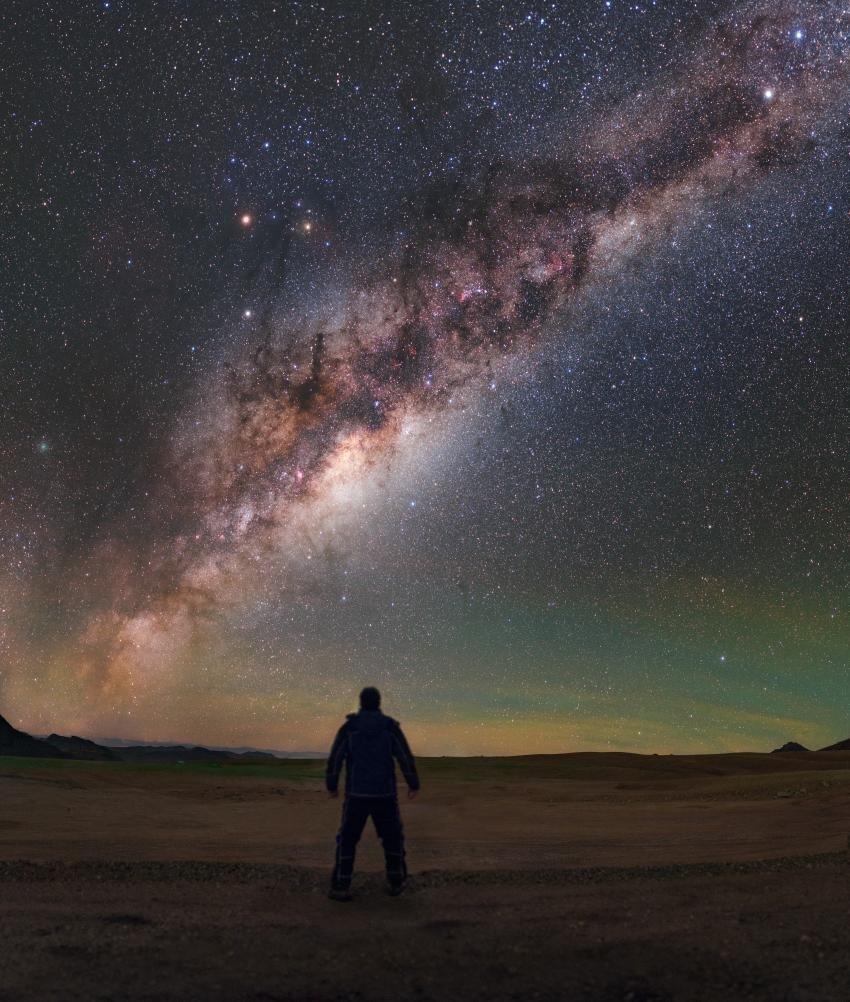The oldest stars in the Milky Way Galaxy’s center have been the subject of the most extensive collection of in-depth observations to date, according to an international team of experts. Despite being assumed to have formed in a chaotic way, the Pristine Inner Galaxy Survey (PIGS) team discovered that this cluster of stars is gently rotating around the Milky Way’s center.

The center of the Milky Way as seen from the Chajnantor plateau in the Atacama Desert in Chile. Image Credit: ESO/P.Horalek
Furthermore, they appear to spend most of their lengthy lives close to the Galactic center. At the National Astronomy Meeting 2023 at the University of Cardiff, Dr. Anke Arentsen, a member of the PIGS team from the University of Cambridge, will present the new findings this week.
It is possible to investigate the characteristics of early galaxies by using stars that were created in the first billion years following the Big Bang and are still in existence today.
Their pure chemical makeup, which consists primarily of hydrogen and helium with significantly less abundance of heavier elements than younger stars like the Sun, makes them easy to identify. In the low-density halo surrounding this galaxy, which is easier to find than the Milky Way disc plane, astronomers often look for these ancient stars.
The earliest stars are predicted to exist in the Milky Way’s dense interior, according to models of galaxy formation. Ancient stars are incredibly rare compared to the vast majority of their younger contemporaries, making it difficult to find them in this region where the line of sight to the Galaxy’s center is blocked by significant volumes of interstellar dust.
Arentsen and her team successfully pre-selected candidate stars for the PIGS project using a specialized imaging filter on the Canada-France-Hawaii Telescope (CFHT).
The most extensive collection of in-depth observations for pristine inner Galaxy stars has now been made, thanks to its confirmation by spectroscopic observations made with the Anglo-Australian Telescope (AAT).
The movement of these old stars through the Milky Way was then examined using the PIGS observations along with information from the Gaia space project. Even the oldest stars discovered still exhibit some average rotation about the Galaxy’s center, albeit it turns out that as stars get older, their motions get more erratic.
They also demonstrate that many of these stars spend practically their entire existence in the inner Galaxy, within a sphere that only extends halfway between the galactic center and the Sun.
It is exciting to think that we are seeing stars that formed in the earliest phases of the Milky Way, previously largely out of reach. These stars likely formed less than a billion years after the Big Bang, so are relics from the early Universe. The available data for these ancient objects is growing rapidly. I’m excited to see what we will learn about these first stars to populate our Galaxy in the next few years!
Dr. Anke Arentsen, Postdoctoral Scholar, Institute of Astronomy, University of Cambridge